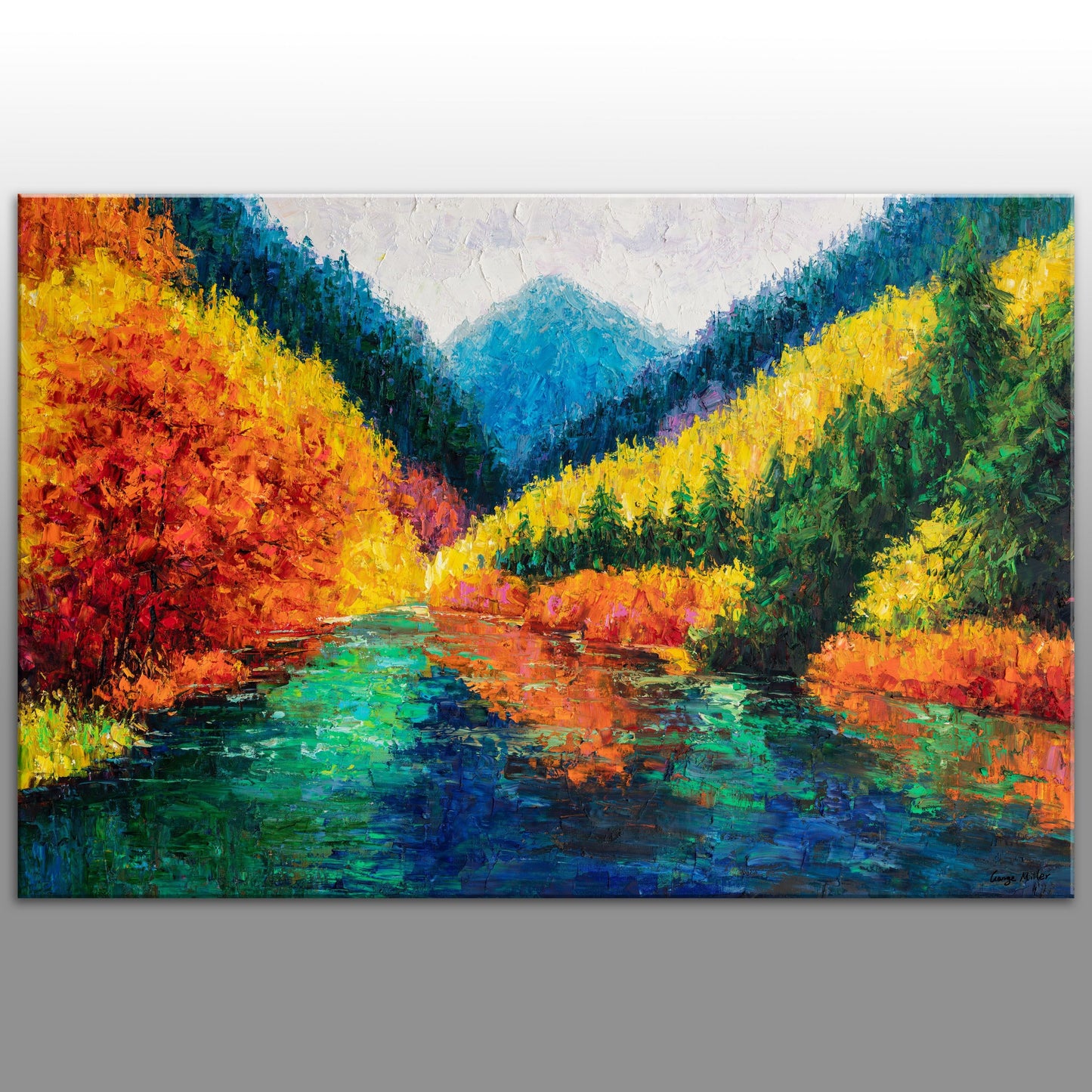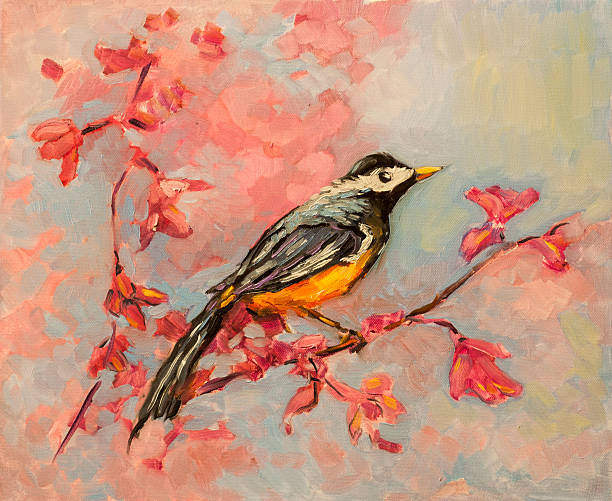Creative Design Inspirations with Oil Paintings for Sale
Creative Design Inspirations with Oil Paintings for Sale
Blog Article
Discovering All Concerning Oil Paintings: A Guide to Comprehending Their Beauty and Worth
Oil paintings have captivated target markets for centuries, using a glance into the imaginative proficiency of different eras. Their rich history is intertwined with cutting-edge techniques and extensive emotional expression. Comprehending the materials and methods behind these art work can enhance admiration. In addition, the marketplace for oil paintings presents possibilities for collectors and investors alike. As one discovers this remarkable world, the inquiry arises: what makes an oil paint genuinely important?
The History of Oil Paint: A Journey Through Time
Although oil painting has roots that go back to ancient times, it really grew throughout the Renaissance, when musicians uncovered its versatility and rich color potential. Early examples can be traced to the 7th century, with strategies progressing notably throughout cultures. The medium became prominent in Northern Europe in the 15th century, particularly with the works of artists like Jan van Eyck, that originated its use for thorough realistic look and lively hues. This period marked a separation from tempera paints, enabling for better deepness and texture. As oil paint spread, it influenced plenty of artists, causing masterpieces by distinguished figures such as Leonardo da Vinci and Rembrandt. The medium's heritage continues, shaping the art world well right into modern-day times.
Comprehending Oil Repaints: Products and Techniques
As musicians explore the world of oil paints, they experience a varied array of products and techniques that define this tool. The primary elements of oil paint consist of pigments, which supply color, and drying oils, such as linseed, that bind the pigments and promote application. Various additives can customize the paint's structure and drying time, enhancing adaptability. Methods like glazing, where clear layers are accumulated, and impasto, which entails applying thick paint, permit different aesthetic effects. In addition, using brushes, palette knives, and also fingers can produce unique textures and surfaces. Comprehending these strategies and materials allows artists to totally share their creative thinking and accomplish the wanted influence in their art work.
The Function of Color in Oil Paintings
Shade plays a crucial duty in oil paints, influencing both visual charm and psychological resonance. Comprehending shade theory fundamentals, consisting of the connections between colors, can boost a musician's capability to communicate state of mind and atmosphere. In addition, mastering shade blending strategies permits greater depth and richness in a painting's palette.

Color Theory Essential
Comprehending shade concept is necessary for artists collaborating with oil paints, as it develops the foundation for producing visually interesting and unified compositions. Shade theory incorporates the study of how colors interact, the shade wheel, and the partnerships between main, additional, and tertiary colors. Musicians make use of corresponding shades to boost contrasts and create focal points, while comparable colors promote unity and cohesiveness within an item. Additionally, the principles of warm and great colors affect the assumption of deepness and space in a painting. Realizing these principles permits artists to control color properly, guiding the visitor's eye and communicating their intended message. Mastery of color concept ultimately enriches a musician's capability to communicate feelings and concepts via their job.
Emotional Influence of Color
The emotional impact of color in oil paintings plays a vital role in how viewers connect and regard with art work. Shades stimulate specific sensations and moods, affecting the visitor's emotion. For example, cozy tones like oranges and reds can develop a feeling of warmth and power, while amazing tones such as blues and environment-friendlies often stimulate peace or introspection. Artists tactically choose shade palettes to improve narrative aspects, leading the audience's psychological trip. The saturation and comparison of colors further magnify these results, drawing interest and producing focus. Inevitably, the interaction of shades in oil paintings not just enhances their visual charm but additionally functions as an effective medium for emotional expression, enriching the viewer's experience and analysis.
Shade Mixing Techniques
While numerous aspects of oil paint add to the overall composition, mastering color blending strategies is crucial for accomplishing preferred impacts and depth. Shade blending can be approached via different methods, consisting of the subtractive and additive procedures. Additive blending involves incorporating colors of light, while subtractive blending counts on pigments, where colors blend to produce brand-new shades. Artists often use a minimal palette to create harmonious works, recognizing the connections between main, additional, and tertiary colors. Techniques such as glazing and scumbling even more enhance depth and luminance. By masterfully mixing colors, a musician can evoke emotions, develop centerpieces, and accomplish a sense of realism, eventually boosting the painting's emotional and visual impact.
Famous Oil Painters and Their Iconic Works

Famed for their mastery of color and technique, oil painters have produced a few of one of the most popular artworks in history. Distinguished musicians like Vincent van Gogh mesmerized target markets with his stirring brushwork in "Starry Evening," while Claude Monet's "Perception, Daybreak" prepared for Impressionism. Leonardo da Vinci's "Mona Lisa" continues to be a long-lasting icon of imaginative wizard, showcasing his ability in recording human expression. Rembrandt's "The Night Watch" illustrates his ingenious use of light and shadow. Other noteworthy figures consist of Pablo Picasso, that changed modern-day art with his bold experimentation in works like "Les Demoiselles d'Avignon," and Georgia O'Keeffe, whose dynamic depictions of blossoms and landscapes aided specify American innovation. Each musician's unique style contributed significantly to the oil painting landscape.
How to Assess the High Quality of an Oil Painting
Assessing the high quality of an oil painting includes a cautious evaluation of craftsmanship methods, in addition to an analysis of color and composition. Observing brushwork, layering, and the application of paint can reveal the musician's ability level. Furthermore, the interaction of shades and the general setup of aspects contribute substantially to the paint's visual value.
Evaluating Craftsmanship Strategies
A careful assessment of workmanship methods is important for determining the high quality of an oil painting. Critics must initially take a look at the application of paint; thick, textured brushstrokes might recommend a knowledgeable hand, while excessively consistent applications could show an absence of depth. oil paintings for sale. The layering method is additionally important; the visibility of glazes and differed thickness can enhance brightness and intricacy. Additionally, the top quality of the materials utilized, such as the canvas and pigments, plays a substantial role in durability and general visual. Interest to detail in components like edges and changes in between colors mirrors the artist's commitment to their craft. Eventually, these strategies contribute to the painting's emotional influence and market worth, serving as signs of the musician's skill and intent
Evaluating Shade and Structure
While reviewing the quality of an oil paint, one should concentrate on the interaction of shade and make-up, as these elements are fundamental to the artwork's general effect. Shade selections can develop and stimulate emotions mood; as a result, the musician's scheme need to be examined for harmony and contrast. A well-balanced composition guides the customer's eye and develops a feeling of unity. Musicians usually use strategies like the rule of thirds or leading lines to enhance aesthetic passion. In addition, making use of light and shadow can add deepness, boosting the three-dimensionality of the paint. Eventually, a successful oil painting marries shade and composition, engaging the customer and welcoming a much deeper gratitude of the artist's vision and method.
Taking care of and Preserving Oil Paintings
Correct treatment and conservation of oil paints is important for preserving their stability and durability. To secure these art work, it is crucial to present them away from direct sunshine, which can trigger fading and discoloration. Maintaining a secure atmosphere with controlled temperature level and moisture further help in protecting against damage. Cleaning ought to be done delicately using a soft, dry cloth, avoiding any rough chemicals that can damage the paint or varnish. Normal assessments for signs of wear and tear, such as flaking or splitting, are a good idea. When storing or moving oil paints, appropriate padding and framing are essential to prevent physical harm. Inevitably, persistent care contributes to the visual allure and worth of oil paintings over time.
The Market for Oil Paintings: Spending and collecting
Recognizing the market dynamics for oil paints is vital for investors and collection agencies alike. The worth of these artworks is influenced by different elements, consisting of website the artist's reputation, historic importance, and existing patterns. Collectors commonly seek pieces that reverberate directly while considering prospective gratitude in worth. Galleries and public auctions function as main places for buying and selling, with costs changing based upon need and rarity. Buying oil paints requires research into the market, as well as an understanding of credibility and provenance. In addition, arising artists may offer opportunities for considerable returns, while established names can command high prices. Generally, a critical approach to collecting can yield both visual enjoyment and monetary benefits.

Regularly Asked Questions
What Are the Environmental Effects of Oil Paint Products?
The environmental impacts of oil painting products include the release of unstable organic compounds (VOCs), dangerous waste generation, and source removal for pigments. These aspects add to pollution and ecological deterioration, increasing worries amongst eco aware musicians and customers.
Just How Do Various Canvases Influence Oil Paint Outcomes?
Various canvases influence oil painting results significantly. Surface area, appearance, and absorbency high quality can change paint application, drying times, and shade vibrancy. Musicians usually pick details canvases to attain preferred impacts and enhance their artistic expression.
Can Oil Paintings Be Recovered if Harmed?
If harmed, Oil paintings can indeed be recovered. Expert conservators use various strategies to fix tears, tidy surface areas, and address discoloration, guaranteeing that the artwork maintains its initial elegance and value for future generations.
What Are the Signs of an Original Oil Paint?
The indicators of an initial oil paint consist of noticeable brush strokes, appearance variants, and an irregular canvas weave (oil paintings for sale). Additionally, authenticity may be confirmed through provenance, signatures, and the presence of a varnish layer distinct to oil mediums
Exactly How Has Innovation Influenced Modern Oil Painting Techniques?
Technology has significantly influenced modern oil painting strategies by presenting electronic devices for planning, improved materials for texture and longevity, and on-line systems for sharing and marketing art, thus increasing musicians' innovative possibilities and audience get to. Oil paint has roots that date back to ancient times, it truly prospered throughout the Renaissance, when artists discovered its versatility and abundant color capacity. The psychological effect of shade in oil paintings plays an essential role in just how viewers connect and regard with art work. While numerous aspects of oil paint contribute to the general make-up, mastering color blending strategies is important for accomplishing wanted effects and deepness. Assessing the high quality of an oil paint entails a careful assessment of craftsmanship methods, as well as an evaluation of shade and make-up. While evaluating the quality of an oil painting, one need to concentrate on the interaction of shade and composition, as these components are essential to the art work's general effect.
Report this page